
How to Use Battery 16v: Examples, Pinouts, and Specs
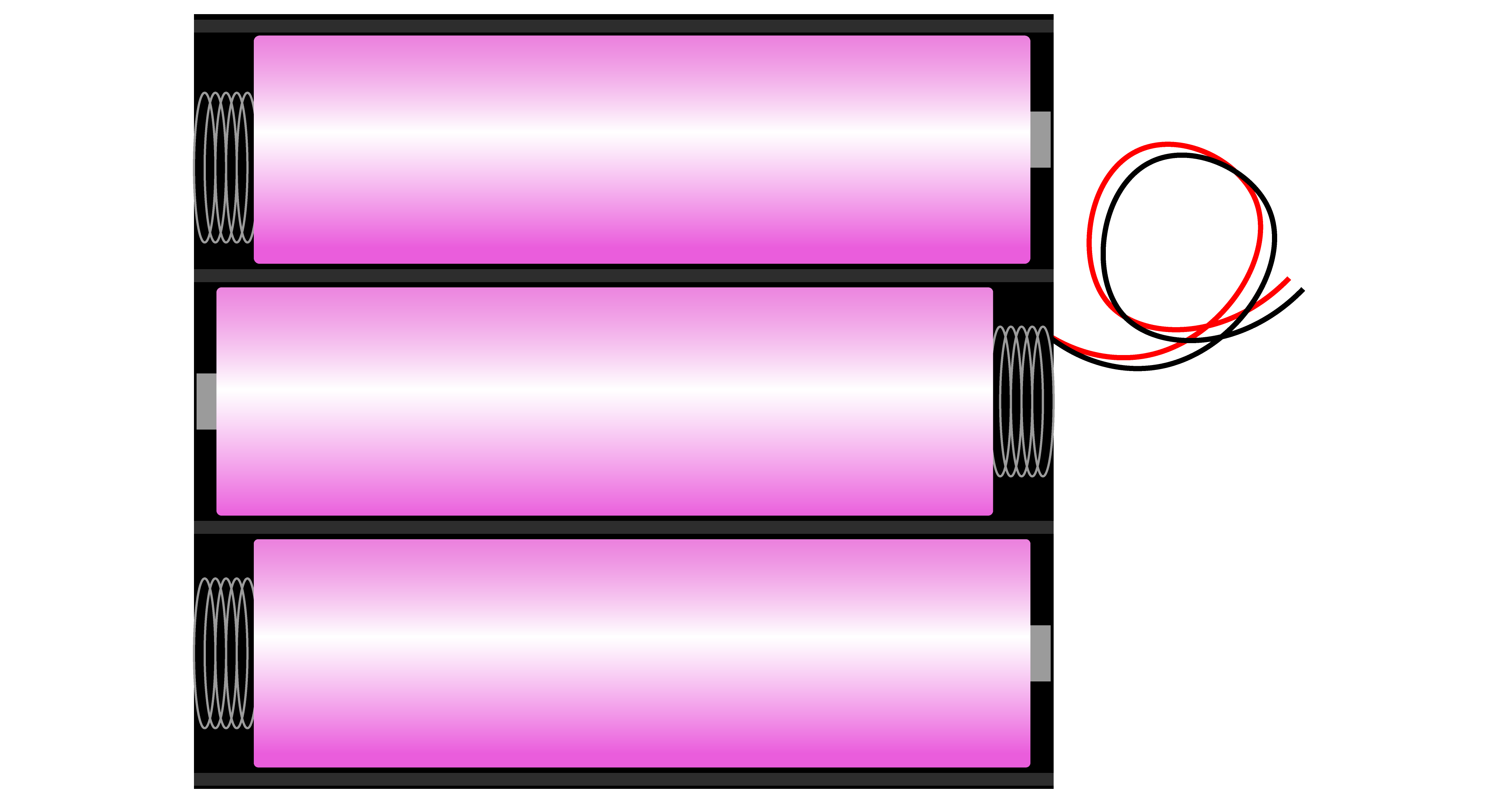
 Design with Battery 16v in Cirkit Designer
Design with Battery 16v in Cirkit DesignerIntroduction
The Battery 16V is a versatile power source designed to provide a stable 16-volt output. It is available in both rechargeable and non-rechargeable variants, making it suitable for a wide range of applications. This battery is commonly used to power electronic devices, circuits, and systems that require a 16V input. Its compact design and reliable performance make it an essential component in portable electronics, robotics, and backup power systems.
Explore Projects Built with Battery 16v
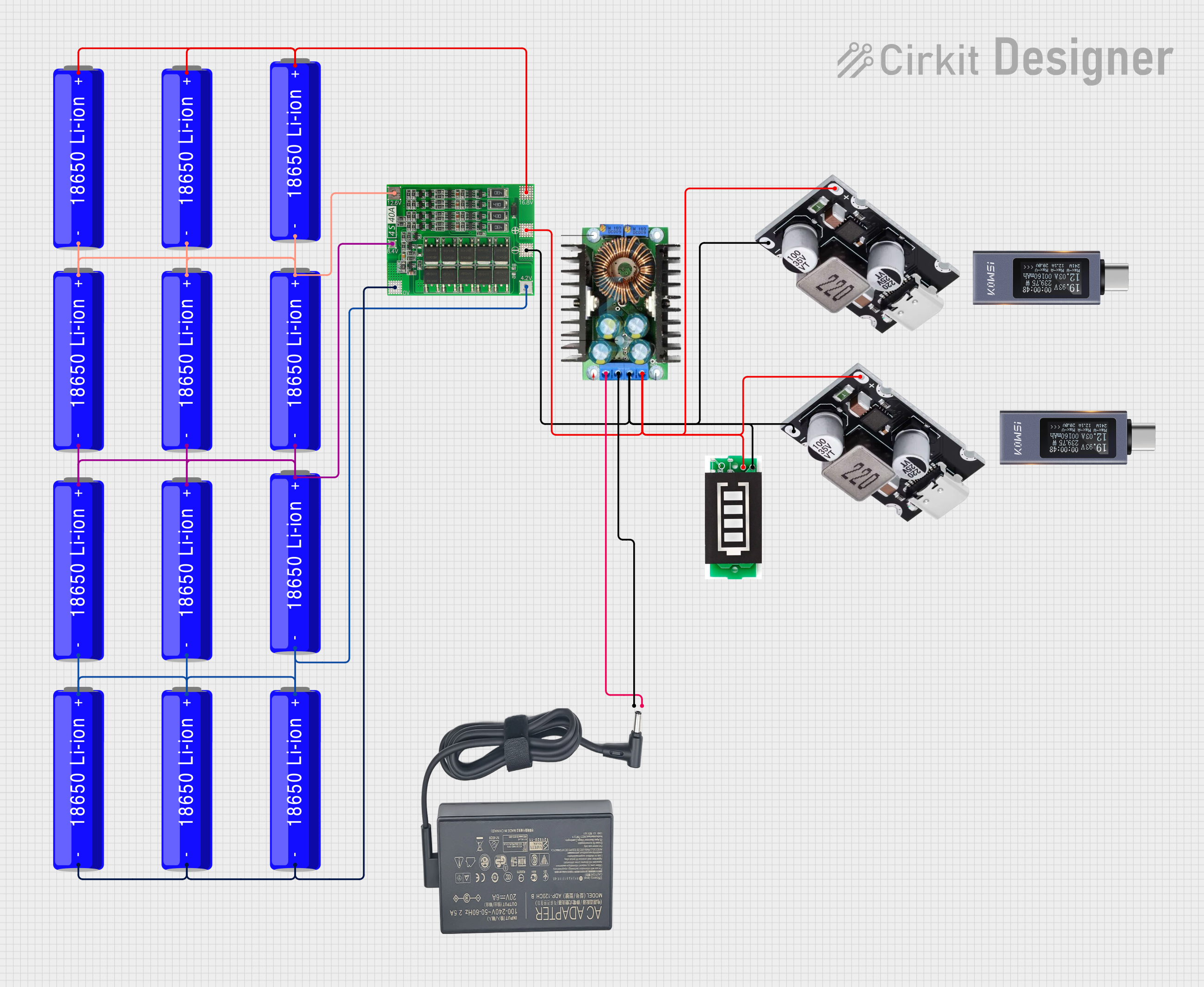
 Open Project in Cirkit Designer
Open Project in Cirkit Designer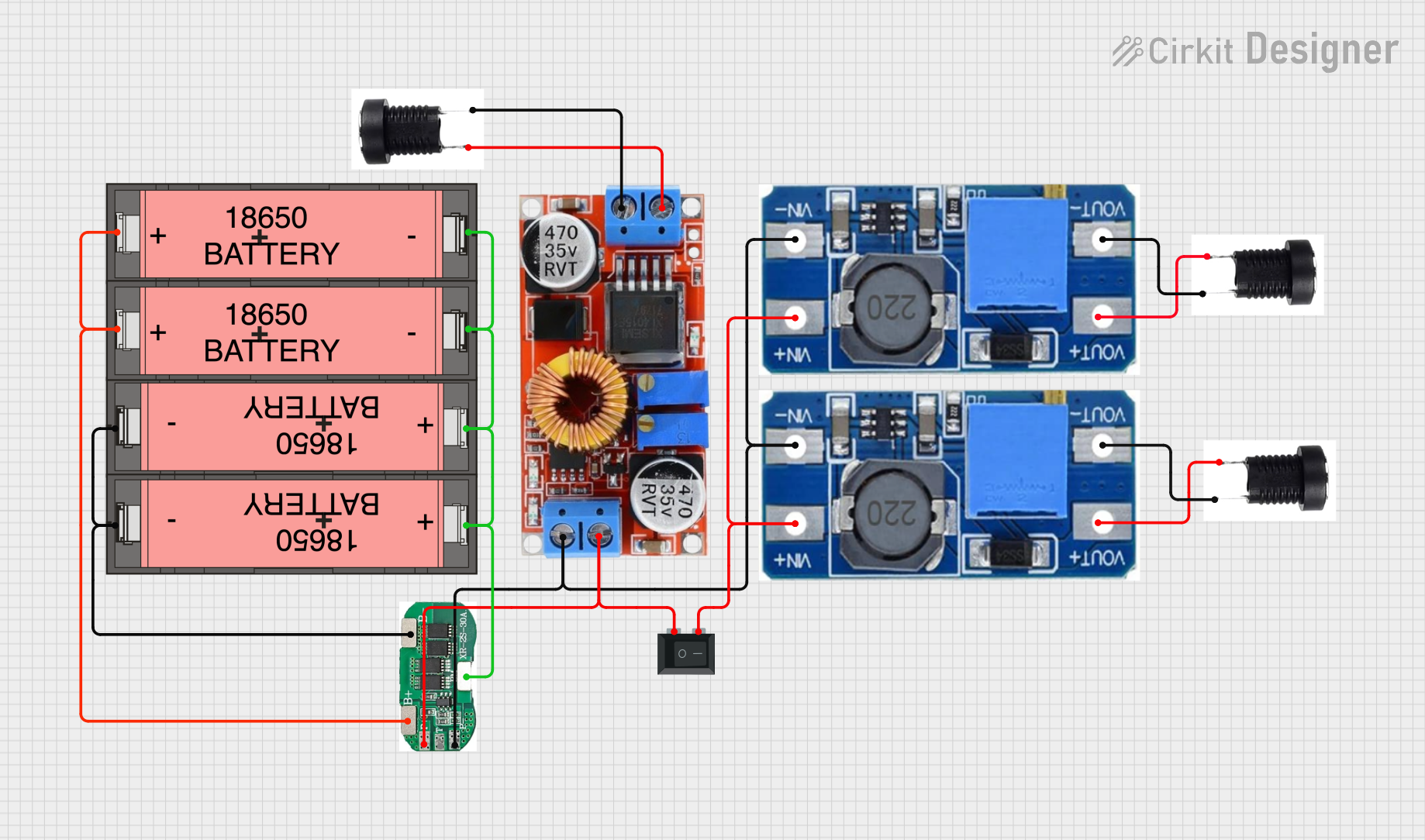
 Open Project in Cirkit Designer
Open Project in Cirkit Designer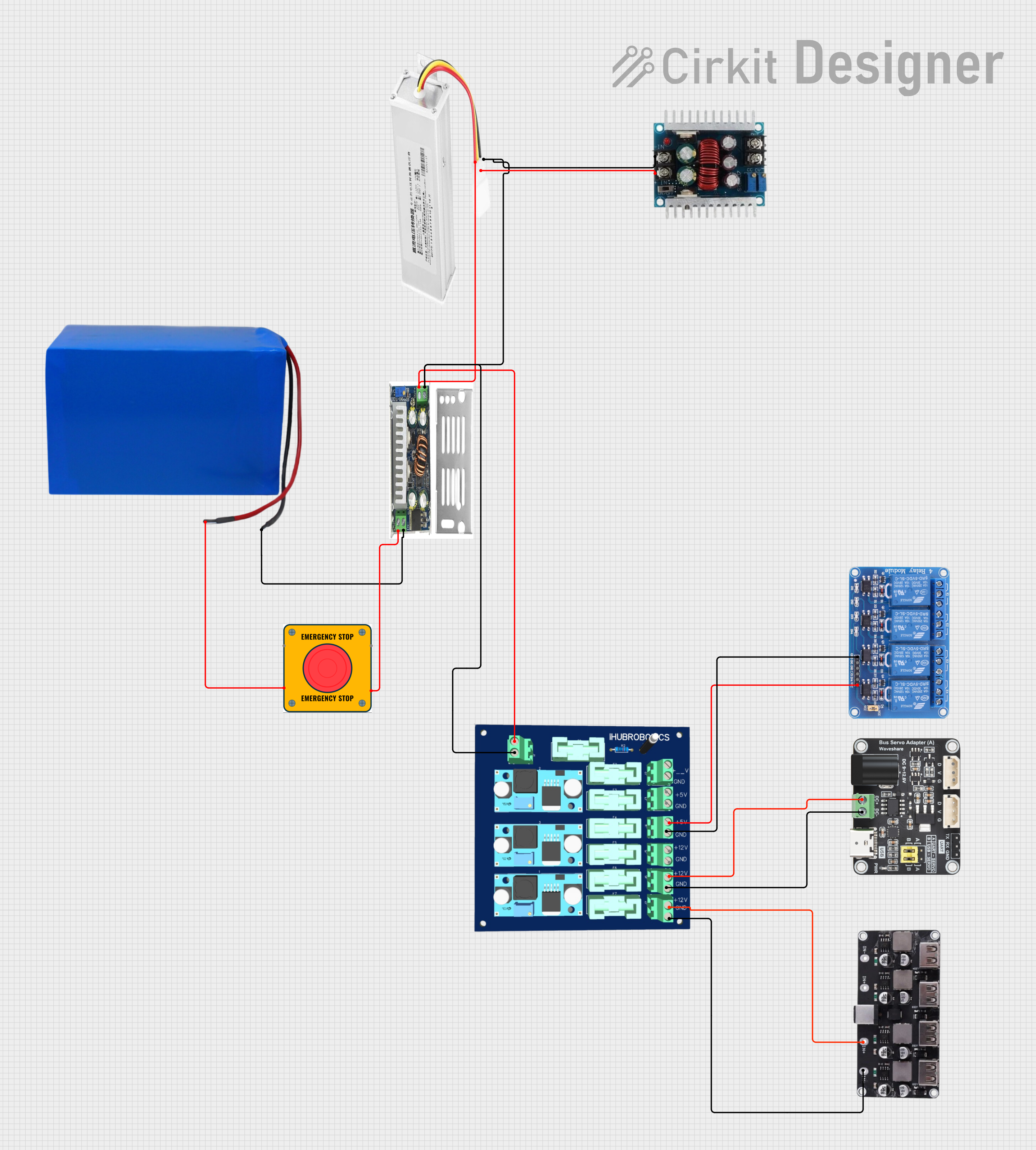
 Open Project in Cirkit Designer
Open Project in Cirkit Designer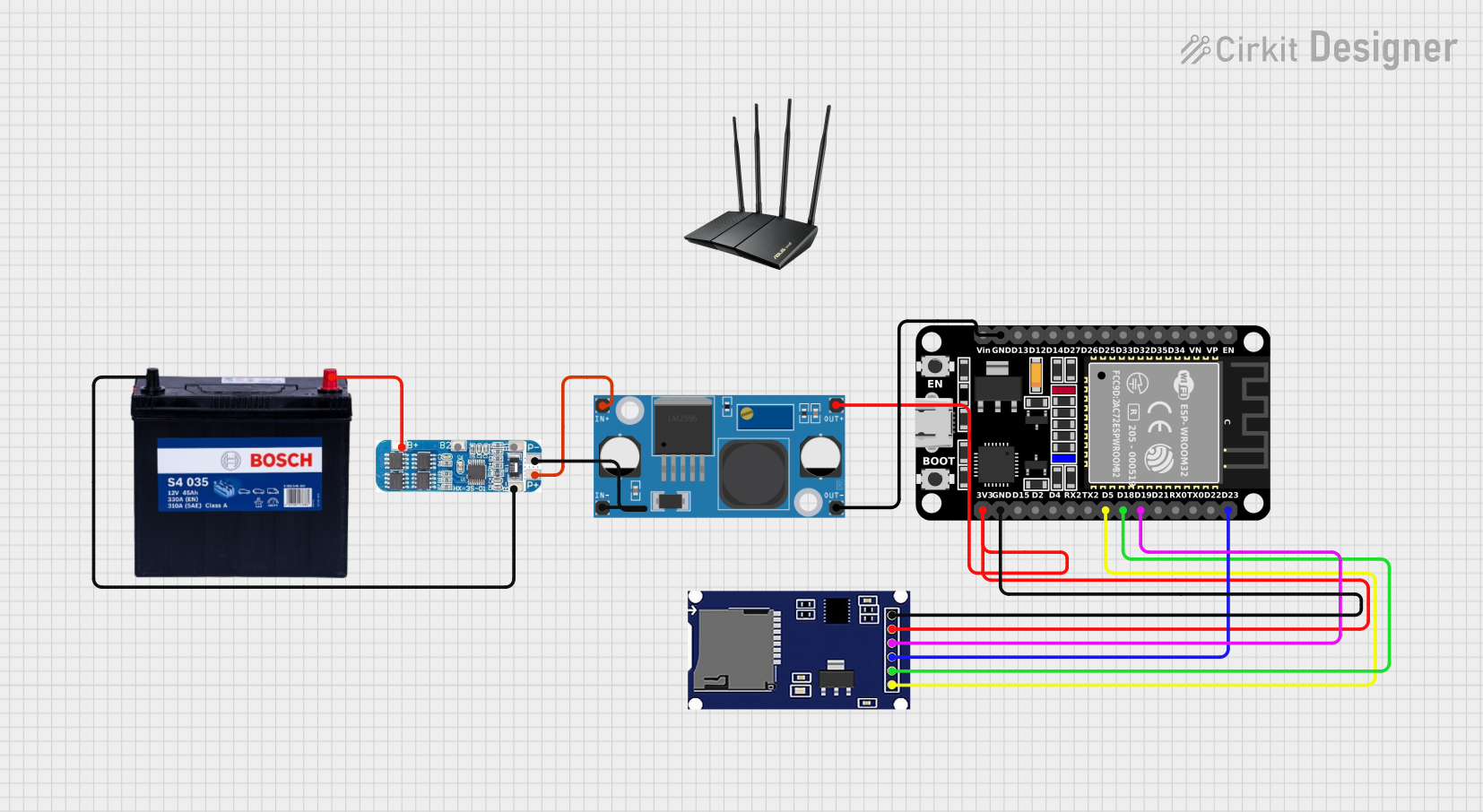
 Open Project in Cirkit Designer
Open Project in Cirkit DesignerExplore Projects Built with Battery 16v

 Open Project in Cirkit Designer
Open Project in Cirkit Designer
 Open Project in Cirkit Designer
Open Project in Cirkit Designer
 Open Project in Cirkit Designer
Open Project in Cirkit Designer
 Open Project in Cirkit Designer
Open Project in Cirkit DesignerCommon Applications and Use Cases
- Powering portable electronic devices
- Robotics and automation systems
- Backup power for critical circuits
- DIY electronics projects
- Motor drivers and high-power amplifiers
Technical Specifications
The following table outlines the key technical details of the Battery 16V:
| Parameter | Specification |
|---|---|
| Nominal Voltage | 16V |
| Capacity (Rechargeable) | 1000mAh to 5000mAh (varies by model) |
| Chemistry | Lithium-ion (rechargeable) or Alkaline (non-rechargeable) |
| Maximum Discharge Current | 2A to 10A (depending on model) |
| Operating Temperature | -20°C to 60°C |
| Dimensions | Varies by model (e.g., 100mm x 50mm x 20mm) |
| Weight | 150g to 300g |
Pin Configuration and Descriptions
For rechargeable Battery 16V models with a built-in connector, the pin configuration is as follows:
| Pin Number | Label | Description |
|---|---|---|
| 1 | Positive (+) | Positive terminal of the battery (16V output) |
| 2 | Negative (-) | Negative terminal of the battery (Ground) |
| 3 | BMS Data | Optional pin for Battery Management System (BMS) communication (if available) |
For non-rechargeable models, only the positive (+) and negative (-) terminals are present.
Usage Instructions
How to Use the Battery 16V in a Circuit
- Identify the Terminals: Locate the positive (+) and negative (-) terminals on the battery.
- Connect to the Load: Use appropriate wires to connect the positive terminal to the positive input of your circuit and the negative terminal to the ground.
- Use a Voltage Regulator (if needed): If your circuit requires a voltage lower than 16V, use a voltage regulator (e.g., LM7805 for 5V output).
- Rechargeable Models: For rechargeable batteries, use a compatible charger designed for 16V lithium-ion batteries. Ensure the charger has overcharge protection.
Important Considerations and Best Practices
- Polarity: Always ensure correct polarity when connecting the battery to a circuit. Reversing the polarity can damage the battery and the connected device.
- Current Rating: Do not exceed the maximum discharge current specified for the battery. Use a fuse or current-limiting resistor if necessary.
- Storage: Store the battery in a cool, dry place when not in use. Avoid exposing it to extreme temperatures.
- Rechargeable Models: Use only chargers recommended by the manufacturer to prevent overcharging or overheating.
- Safety: Avoid short-circuiting the terminals, as this can cause overheating or damage to the battery.
Example: Connecting a Battery 16V to an Arduino UNO
To power an Arduino UNO with a Battery 16V, you will need a voltage regulator to step down the voltage to 5V. Below is an example circuit and code:
Circuit Setup
- Connect the positive terminal of the Battery 16V to the input of a 7805 voltage regulator.
- Connect the output of the 7805 regulator to the 5V pin of the Arduino UNO.
- Connect the negative terminal of the Battery 16V to the GND pin of the Arduino UNO.
Arduino Code Example
// Example code to blink an LED connected to pin 13 of the Arduino UNO
// Ensure the Arduino is powered via the 5V pin using the Battery 16V and a voltage regulator
void setup() {
pinMode(13, OUTPUT); // Set pin 13 as an output
}
void loop() {
digitalWrite(13, HIGH); // Turn the LED on
delay(1000); // Wait for 1 second
digitalWrite(13, LOW); // Turn the LED off
delay(1000); // Wait for 1 second
}
Troubleshooting and FAQs
Common Issues and Solutions
Battery Not Powering the Circuit
- Cause: Incorrect polarity or loose connections.
- Solution: Double-check the connections and ensure the positive and negative terminals are correctly connected.
Battery Overheating
- Cause: Exceeding the maximum discharge current or short-circuiting the terminals.
- Solution: Use a current-limiting resistor or fuse. Avoid short-circuiting the terminals.
Rechargeable Battery Not Charging
- Cause: Incompatible charger or damaged battery.
- Solution: Use a charger recommended by the manufacturer. Check the battery for physical damage.
Voltage Drops Under Load
- Cause: Battery capacity is too low for the load.
- Solution: Use a battery with a higher capacity or reduce the load on the circuit.
FAQs
Q: Can I use the Battery 16V to power a 12V device?
A: Yes, but you will need a step-down voltage regulator to reduce the voltage to 12V.
Q: How do I know if my rechargeable Battery 16V is fully charged?
A: Most chargers have an indicator light that turns green when the battery is fully charged. Alternatively, you can measure the voltage with a multimeter; a fully charged 16V battery typically reads slightly above 16V.
Q: Can I connect multiple Battery 16V units in series or parallel?
A: Yes, you can connect batteries in series to increase the voltage or in parallel to increase the capacity. Ensure all batteries are of the same type and capacity.
Q: Is it safe to leave the battery connected to the charger?
A: For rechargeable models, use a charger with overcharge protection to prevent damage. Avoid leaving the battery connected for extended periods after it is fully charged.